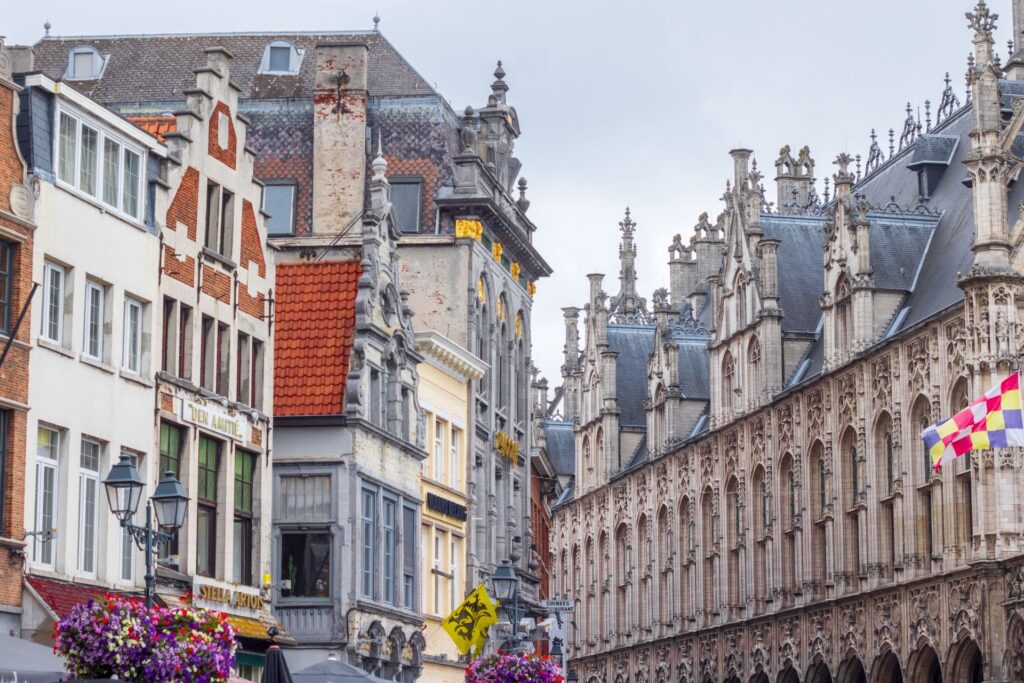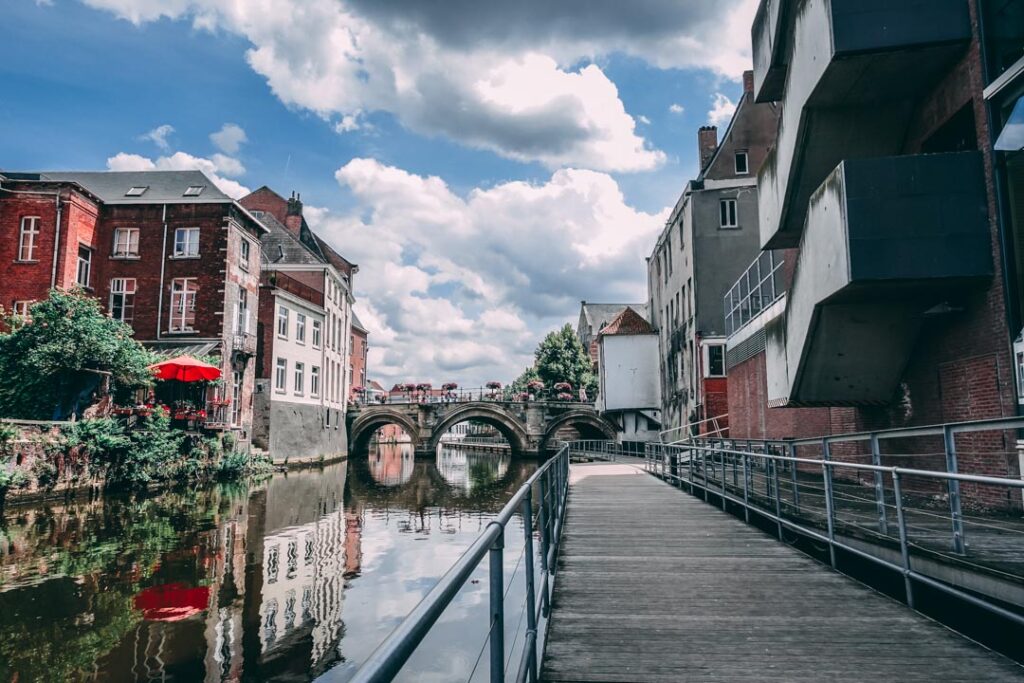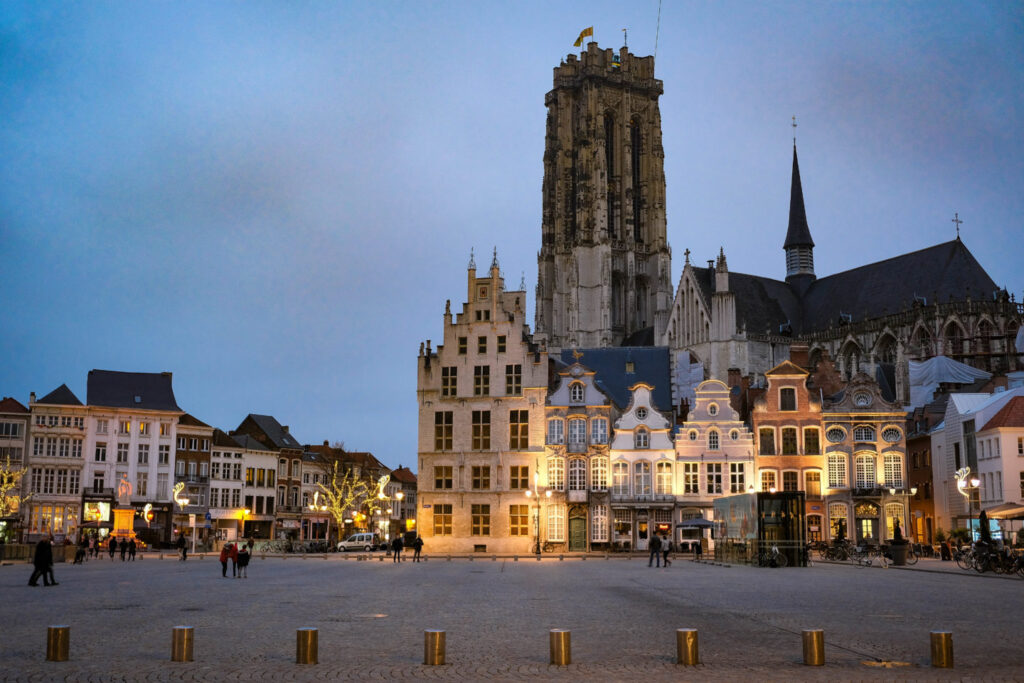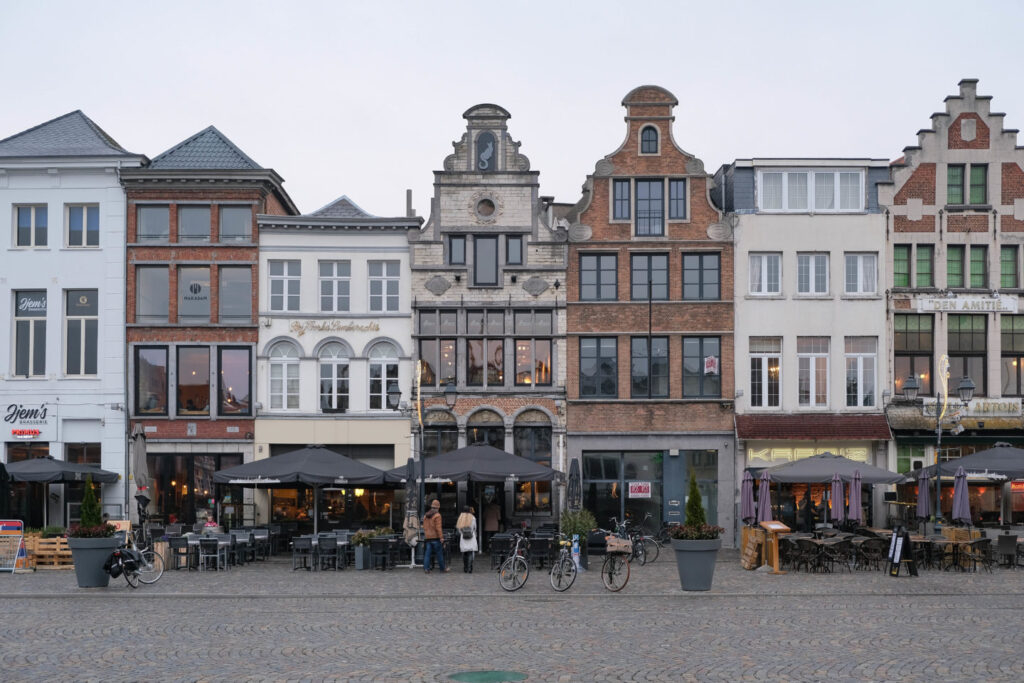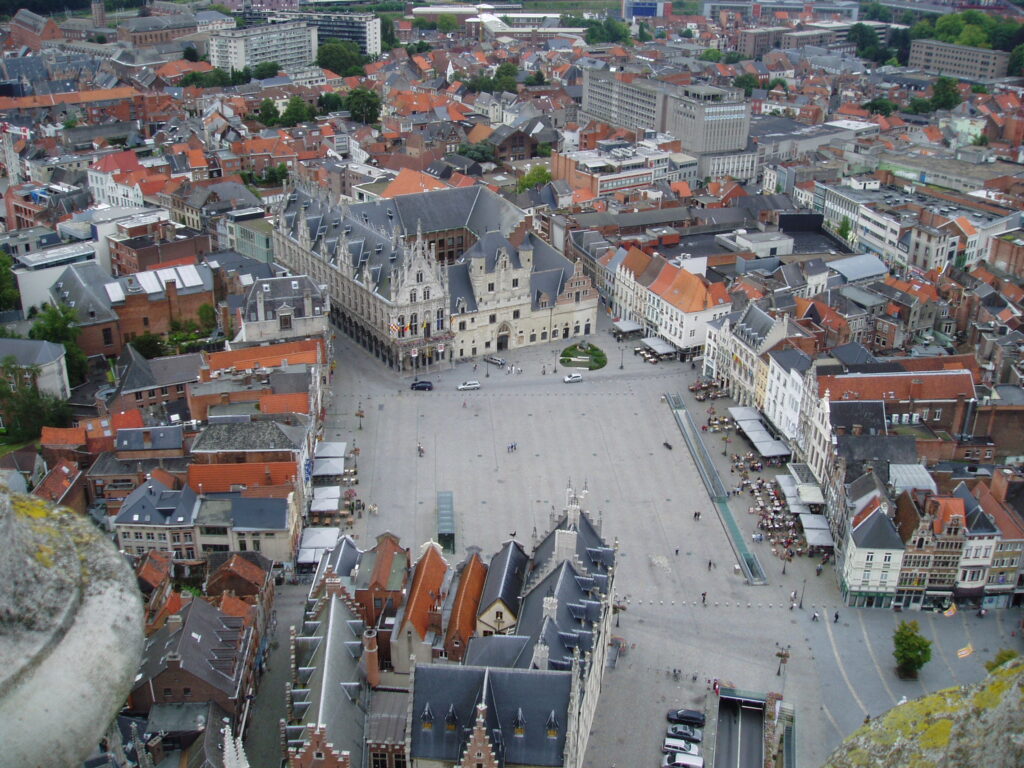Mechelen is a city and municipality in the province of Antwerp in the Flemish Region of Belgium. Though now in the shadow of Brussels, Mechelen is a historically important city in its own right. From 1506 to 1530 it was the capital of the Netherlands under Margaret of Austria. In 1559 it became an archbishopric, a sign of great importance. It was famous for its wood carvings, some of which can still be seen in the churches of the city, and for lace and tapestry manufacture.
Its carillon school is world-renowned, training students from all over the world in the art of playing carillons, sets of 24 or more bells hung in church towers. Shops downtown are often housed in buildings with the old-style Flemish architecture, but offer edgy fashions sure to appeal to the younger generation. Mechelen is developing into the center of non-profit or non-governmental organizations for Flanders. Some famous examples are Natuurpunt, AFS, and the Red Cross. This is mainly because it’s very easily reachable (by train or by highway) but not as expensive as Brussels.
| Country | Belgium |
|---|---|
| Community | Flemish Community |
| Region | Flemish Region |
| Province | Antwerp |
| Arrondissement | Mechelen |
| Government | |
| • Mayor | Bart Somers |
| • Governing party/ies | VLD, CD&V, Groen!, N-VA, Ind. |
| Area | |
| • Total | 33.71 km2 (13.02 sq mi) |
| Population | |
| • Total | 86,304 |
| • Density | 2,600/km2 (6,600/sq mi) |
Today it is a vibrant town, mixing trendy and traditional.
Sights
- Sint-Rombouts kathedraal (St. Rumbold’s Cathedral) with its dominating tower (UNESCO World Heritage ID 943-016); the Sint-Janskerk (Church of St. John the Evangelist) exhibits ‘The Adoration of the Magi’ and the Kerk van Onze-Lieve-Vrouw-over-de-Dijle (Church of Our Lady across the river Dijle) ‘The Miraculous Draught of Fishes’, paintings by Rubens; the domed baroque Basiliek van Onze-Lieve-Vrouw-van-Hanswijk by native architect Lucas Faydherbe, some of whose sculptures can also be found in the cathedral – he was a pupil and leading assistant of Rubens; the baroque Begijnhofkerk (Church of the Beguines, dedicated to St. Alexis and St. Catherine); the former Jesuit church Sint-Pieter en Pauluskerk (Saints Peter and Paul) and the present Jesuit Church of Our Lady of Leliendaal.
- The Brusselpoort, last remaining of the city’s twelve gates, 13th century; the Schepenhuis, oldest stone-built city hall in Flanders, historical seat of the ‘Grote Raad’ (Great Council or Supreme Court), 13th century; the gothic–renaissance Hof van Busleyden where Hieronymus van Busleyden received Erasmus, Thomas More, and the later Pope Adrian VI. These three recently restored buildings together now house the City Museum.
- The Palace of Margaret of York when widowed of Charles the Bold, now the City Theatre; the oldest renaissance building north of the Alps, Palace of Margaret of Austria while as regent of the Netherlands still raising the later Charles Quint, then for centuries the Supreme though now a lower Court of Justice; in one of these palaces, Anne Boleyn was educated for some time as well.
- The Palace of the Archbishop of the Roman Catholic province Belgium, still in use for its original purpose by Archbishop De Kesel. These palaces may not be open to the public in general but do offer a good external view.
- The “Hof van Hoogstraten”, 16th-century palace of Antoon I van Lalaing
- The “Hof van Nassau”, 15th-century building which served as temporary court of Margaret of York when she arrived in Mechelen after her marriage with Charles the Bold
- The “Hof van Cortenbach”, 16th-century building
- The “Hof van Coloma”, 18th-century palace of Jean Ernest Coloma, Baron of St-Pieters Leeuw and member of the Coloma family
- The Lakenhal (a cloth hall) and the 14th-century Belfry (UNESCO World Heritage ID 943-015) beside it, form now the City Hall on the main square.
- The Klein Begijnhof and the Groot Begijnhof (UNESCO World Heritage ID 855-003) (Small and Large Beguinages)
- The Vismarkt (former fish market): 16th-century square located in the heart of the city along the river Dijle.
- The Jewish Museum of Deportation and Resistance in a wing of the former Casern Dossin, built in the 18th century by Queen Maria Theresa of Austria, ruler of the Austrian Netherlands.
- Technopolis, center for hands-on Science and Technology.
- Mechelen Toy Museum at Nekkerspoel
- Planckendael Zoo in Muizen
- The Botanical Garden of Mechelen (Kruidtuin), a city park with marble statue of the 16th-century botanist Rembert Dodoens; Vrijbroek recreational park with around June its outstanding Rose Gardens and in summer its Dahlia Garden; the Tivoli Park with Children’s Farm
- Places less accessible or outstanding, or of a more particular interest:
- the Refuge of Grimbergen, the Refuge of Villers, the Refuge of Rozendaal, the Refuge of Sint-Truiden and the Refuge of Tongerlo, retreat mansions for distant abbeys, the latter now housing the Manufacturer De Wit which restores the finest tapestries, for which Flanders was famous in the 16th century.
- ‘t Groen Waterke, a picturesque small remnant of bygone canals – in particular of the Melaan, of which a longer stretch was after more than a century uncovered in 2007.
- A stone pillar De Mijlpaal, now prominent in front of the station, had marked the nearby destination point of the first passenger train ride on the continent. The name was adopted by the railway workers’ club for miniature model trains, and by a small museum housed in one of the oldest railroad buildings commemorates the historical event and consequent local industry of national importance.
- The Clock Museum, also known as the Watchmakers’ Museum
- The Royal Carillon School “Jef Denyn” where carillonneurs come from around the world to study the carillon and playing of the instrument. In fine rococo house ‘The ship’.
- The grounds of the Theravada Buddhist place of worship Wat Dhammapateep (Temple of the Flame of Truth or Reality as taught by the Enlightened One) has since 2005 housed agreen granite Buddha, sculptured in China, seated on a dark green granite soccle – the tallest granite Buddha in Europe.
- There are over 300 protected monuments in Mechelen.
- Many interesting facades along an easy walk from AB-straat by Katelijnestraat towards the Grote Markt, just behind the Schepenhuis turn right along IJzerenleen and before the Grootbrug (oldest stone bridge of Flanders) again right to the Vismarkt, always maintain left along a few curves and across the Kraanbrug (bridge) on the Haverwerf, pass the renewed complex of the former Lamot brewery; from the Grootbrug have a look on the river but stay on this bank: turn right onto the Zoutwerf till De Zalm (The Salmon), originally House of the Fishermans’ Guild, tread back and turn left to the Korenmarkt where minor traces of an early cloth hall remain: a 12th–13th century wall and ditch held Mechelen on this side of the river.
Specialties
Historically famous Mechlinian trades include laken (woollen cloth), tapestries, cordwain, Mechlin lace (precious bobbin lace, already from the early 18th century), wood carving and sculpturing, and furniture.
Mechelen was at the heart of the revival of the carillon in the early 20th century, and hosts its principal school in the world to this day. The area around Mechelen is famous for the cultivation of vegetables, among which are Belgian endive (witloof), asparagus, and cauliflower. Founded in the city, the Mechelse Veilingen in neighbouring Sint-Katelijne-Waver is the largest co-operative vegetable auction in Europe.
One of the four breeds of the Belgian Sheepdog is the local Malinois. The Mechelse koekoek is a local poultry breed, fleshy chickens with black and white feathers which extend on the birds’ legs, with colours reminiscent of a cuckoo, hence the name.
Mechelsen Bruynen was allegedly the emperor Charles V’s favourite beer. A version is still brewed in the city at Het Anker brewery, one of the oldest breweries in Belgium.


